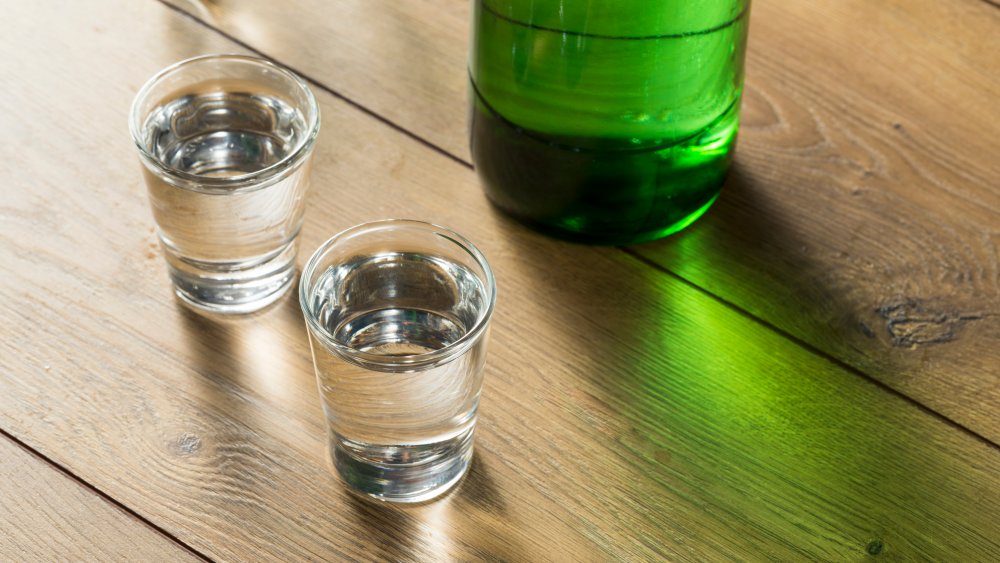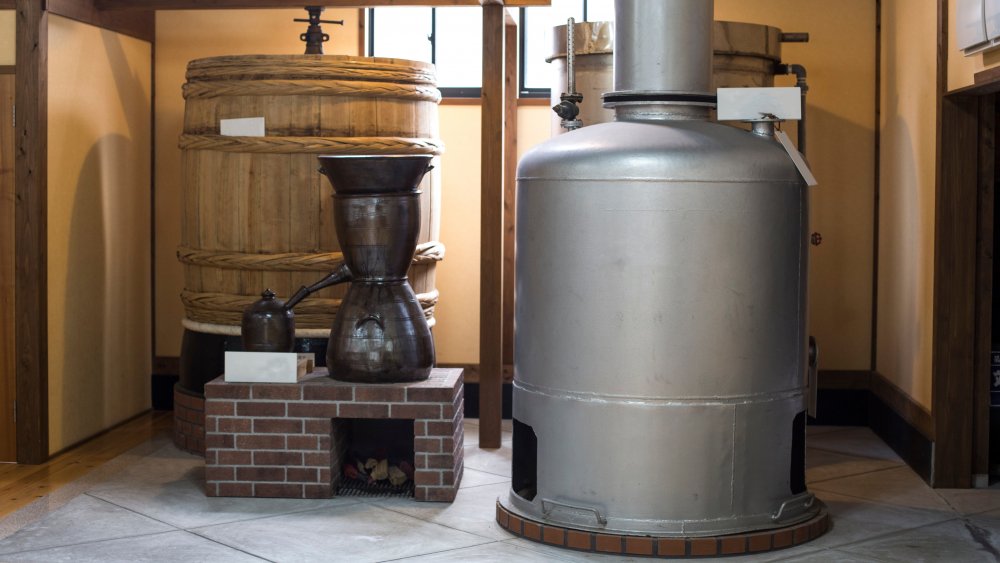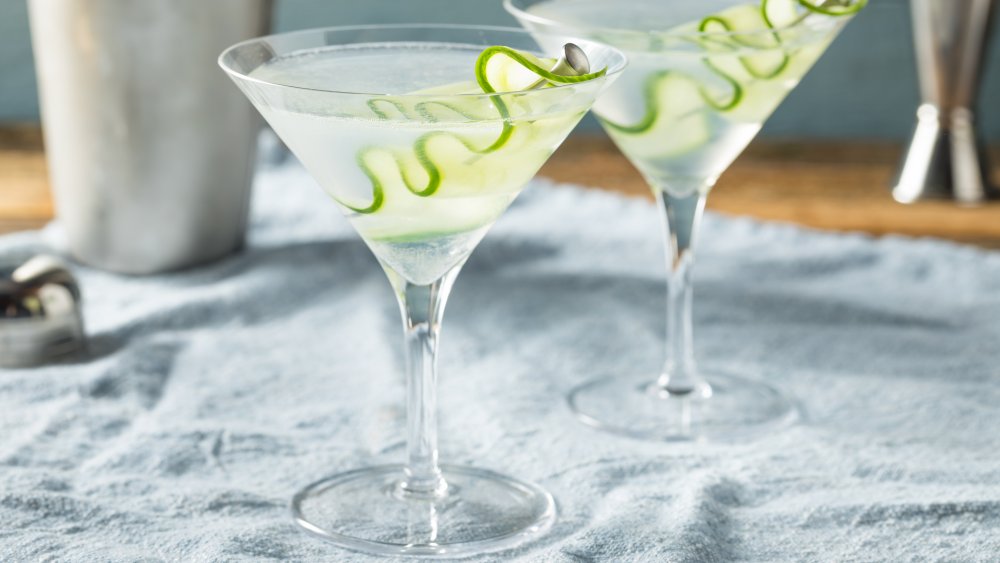What's The Difference Between Sake And Soju?
When comparing sake with soju, most Americans are far more familiar with the former, a frequent sushi companion — but in the global market, their popularity factors are flipped.
According to VinePair, Korea's soju is "the world's top-selling liquor by volume," though some varieties' relatively low alcohol content (which can range from 20 to 34 percent) may allow U.S. bartenders to serve it with just a beer and wine license. Sake, which clocks in at about 15 percent ABV, has declined in popularity in its native Japan by 30 percent since 1975, but exports to the United States (the No. 1 foreign buyer) have considerably grown, now accounting for more than one-third of all sake shipped abroad (via NBC News).
However, aside from their different countries of origin, alcohol contents, and prevalence, these two clear boozy beverages also feature key contrasts in their production processes, flavors, and serving suggestions.
The making of sake vs. soju
The creation of sake is a complex process that starts with harvesting, polishing, washing, soaking, and steaming rice, then introducing a fungus called koji as well as yeast, followed by fermentation, filtering, and usually pasteurizing (via Sake Experience Japan). Hence, according to VinePair, sake is more similar to beer than other alcohol, such as wine or spirits, and is preferred at room temperature but can be enjoyed cold or warm (heating somewhat helps mask the off-notes of lower-quality varieties).
Soju, on the other hand, is not brewed, but "distilled like vodka" at high temperatures, and, though it was traditionally made from rice, can also derive from other starchy ingredients, such as barley, wheat, tapioca, sweet potato, or a combination of these (via The Spruce Eats). Liquor.com notes that soju (sometimes called "Korean vodka") is "the go-to booze for Korean celebrations," often served chilled in shot glasses.
What do sake and soju taste like?
VinePair explains that soju can host a variety of flavors and aromas, which vary according to its main ingredient(s). But many appreciate its "clean, neutral taste," similar to vodka, with some "subtle sweetness" that helps soften an underlying "astringency" or "bitterness" (via The Spruce Eats). Others have compared its flavor to "cleaning solution" (via Liquor.com) or "gasoline-like ... with very little depth" (via The Takeout).
Still, Koreans often polish off entire bottles of soju — it's food pairing-friendly (especially, of course, with "K-food" specialties), can be swapped for vodka in drinks like Bloody Marys, and can work well in cocktails, even as an alternative to gin or whiskey (via Liquor.com).
Sake, by contrast, is flavor-rated by its Sake Meter Value, ranking from -15 to +15 on a scale of dryest to sweetest; though normally clear and noncarbonated, there are also cloudy unfiltered varieties, as well as sparkling options (via VinePair). Sake brings umami goodness, with a flavor combo of "astringent and savory" that has been described as "mildly sweet," "clean," and "well-balanced," with a "nutty, fruity aroma" and "rich, full body" (via Cuisinevault).
VinePair notes that Japanese drinkers tend to use sake as a "palate cleanser," often consumed by itself. But, like wine, sake is also useful for cooking (via Food & Wine), or, Liquor.com notes, as a mixology standby for refreshing cocktails with a hint of added complexity.


